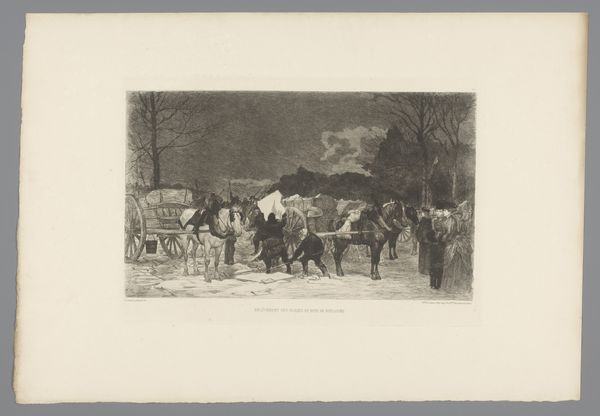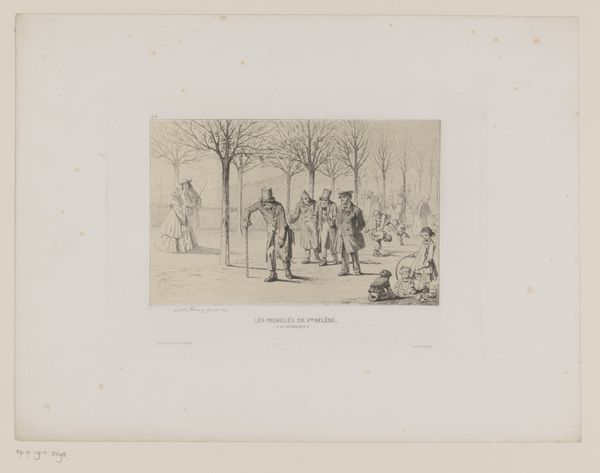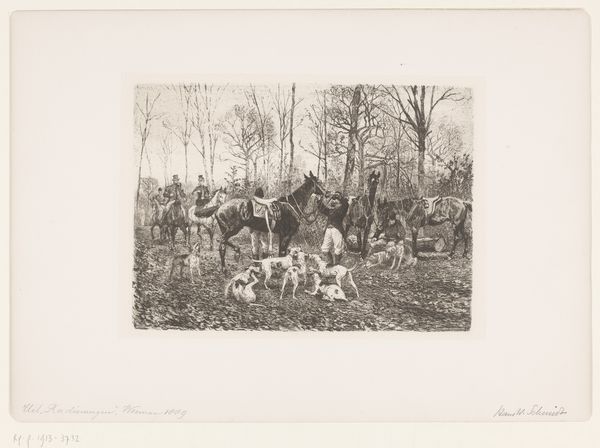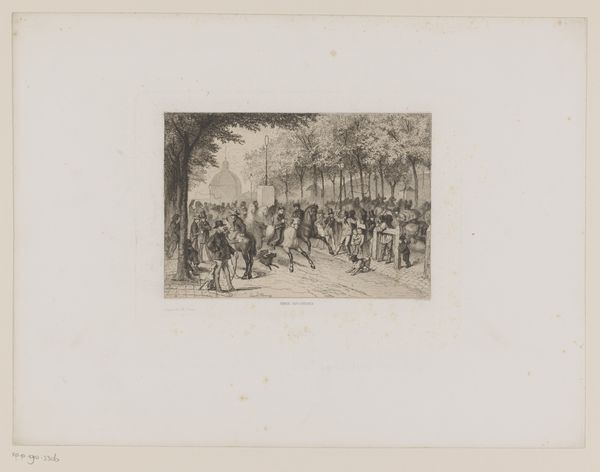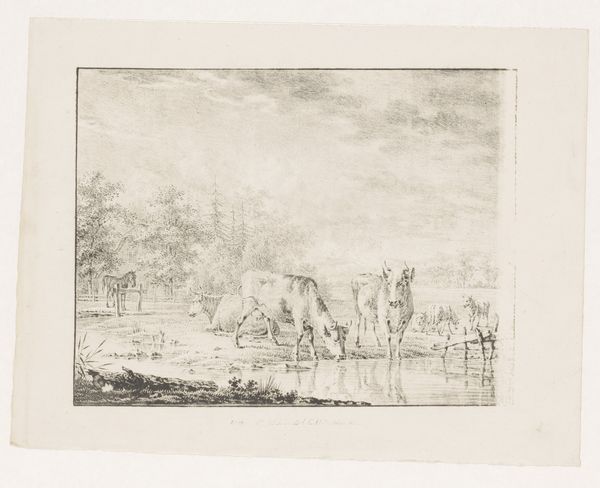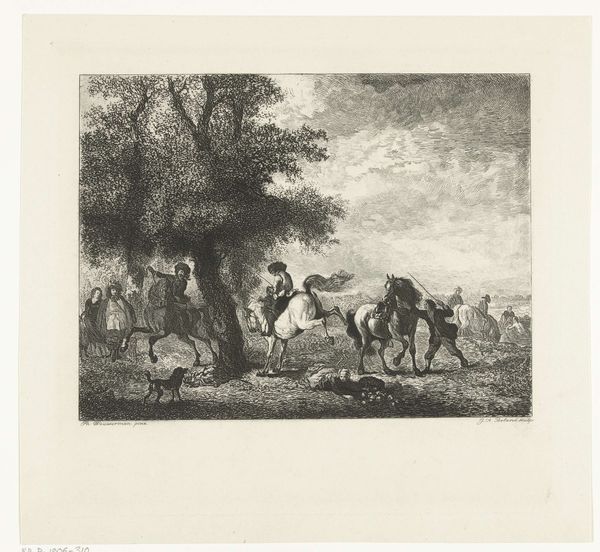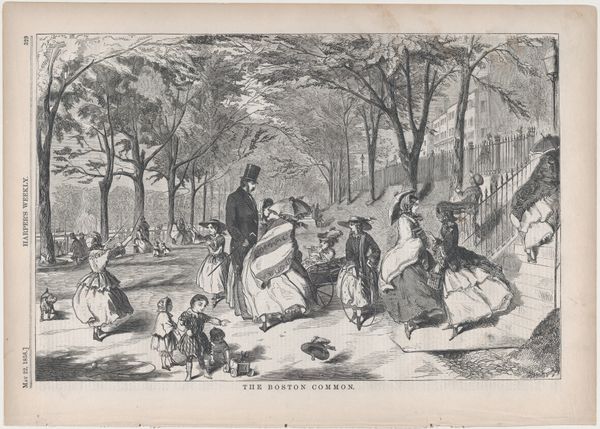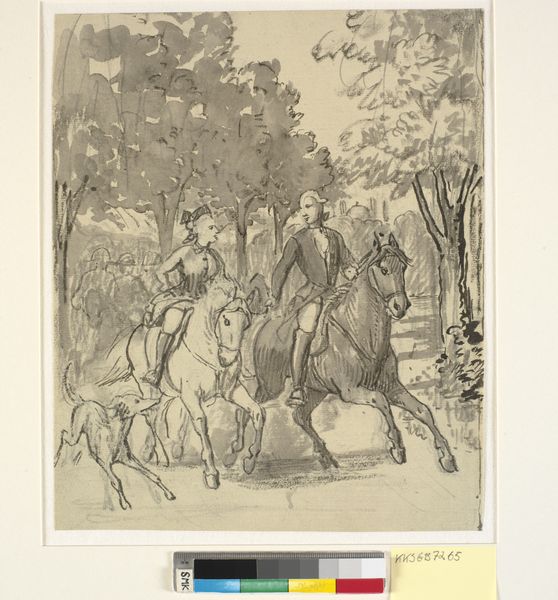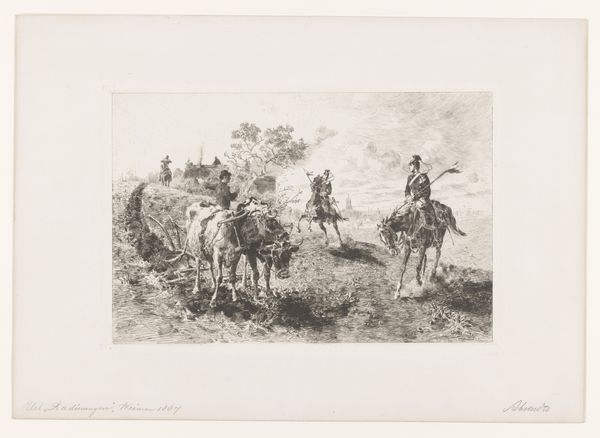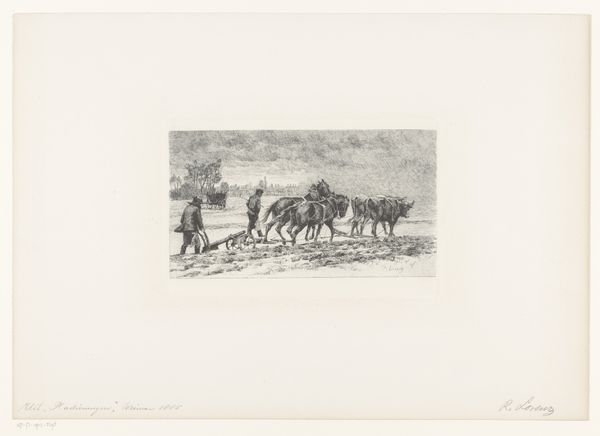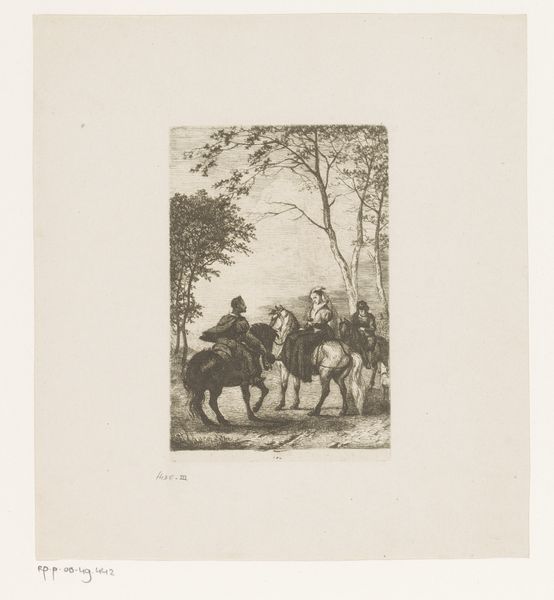
print, etching
#
16_19th-century
# print
#
etching
#
landscape
#
etching
#
genre-painting
#
realism
Dimensions: height 212 mm, width 297 mm
Copyright: Rijks Museum: Open Domain
Conrad Ahrendts created this etching, Belvedere-Allee te Weimar, using a metal plate, acid, and ink. The resulting image has a distinctive look, with fine lines and subtle tonal variations. Etching is an indirect process. First, the artist covers a metal plate with a waxy, acid-resistant ground. Then, they draw an image into the ground, exposing the metal. The plate is then immersed in acid, which bites into the exposed lines, creating grooves. These grooves hold ink, which is transferred to paper under high pressure. Look closely, and you’ll see how Ahrendts used the etching technique to create depth and texture, especially in the trees. The crisp lines create a sense of precision, almost like a photograph, yet the handcrafted nature of the medium imparts a unique character. Think about the labour involved in preparing the plate, drawing the image, and printing each impression. This highlights the skill and artistry involved. By focusing on the materials and process of etching, we can appreciate the artistry involved in this print, challenging any assumptions about the hierarchy of art forms.
Comments
No comments
Be the first to comment and join the conversation on the ultimate creative platform.

